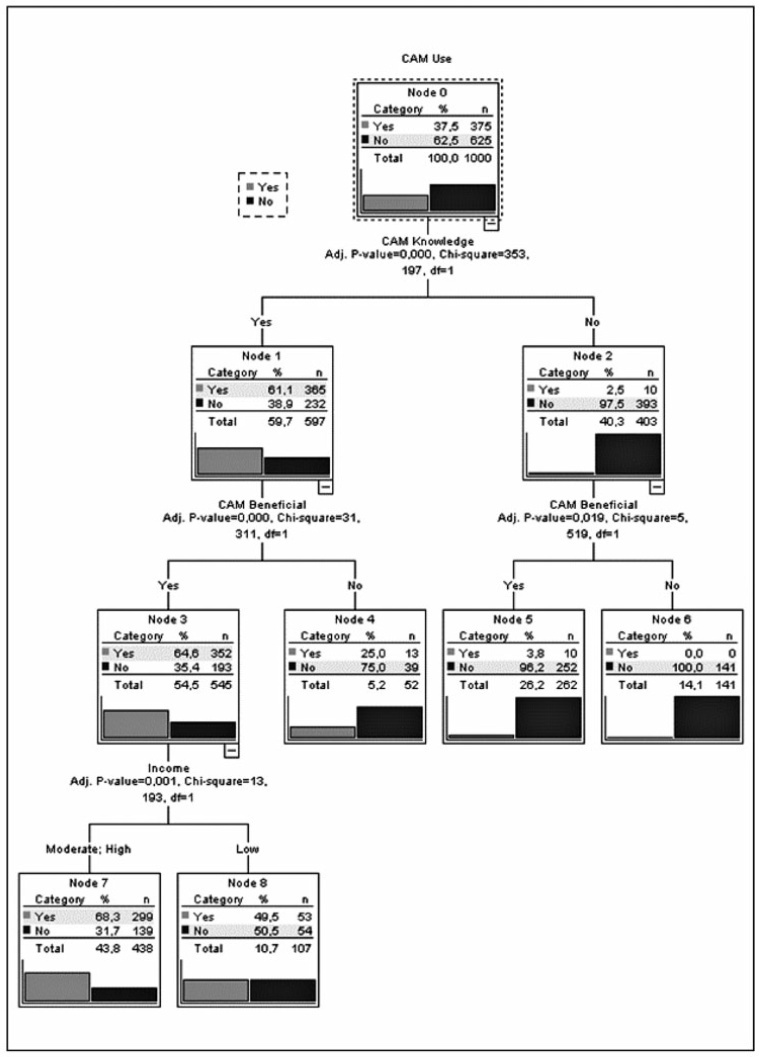Summary
Revista Brasileira de Ginecologia e Obstetrícia. 2021;43(12):932-939
To study maternal anxiety in pregnant women without comorbidities in the context of the COVID-19 outbreak in Brazil and to study maternal knowledge and concerns about the pandemic.
This is a secondary analysis from a national multicenter cross-sectional study performed in 10 cities, from June to August, 2020, in Brazil. Interviewed postpartum women, without medical or obstetrical comorbidities, were included in the present subanalysis. A structured questionnaire and the Beck Anxiety Inventory (BAI) were applied.
Out of the 1,662 women, 763 (45.9%) met the criteria for the current analysis and 16.1% presented with moderate and 11.5% with severe maternal anxiety. Moderate or severe maternal anxiety was associated with high school education (odds ratio [OR]:1.58; 95% confidence interval [CI]:1.04–2.40). The protective factor was cohabiting with a partner (OR: 0.46; 95%CI: 0.29–0.73). There was a positive correlation between the total BAI score and receiving information about care in the pandemic (rpartial 0.15; p < 0.001); concern about vertical transmission of COVID-19 (rpartial 0.10; p = 0.01); receiving information about breastfeeding (rpartial 0.08; p = 0.03); concerns about prenatal care (rpartial 0.10; p = 0.01), and concerns about the baby contracting COVID-19 (rpartial 0.11; p = 0.004). The correlation was negative in the following aspects: self-confidence in protecting from COVID-19 (rpartial 0.08; p = 0.04), having learned (rpartial 0.09; p = 0.01) and self-confidence in breastfeeding (rpartial 0.22; p < 0.001) in the context of the pandemic.
The anxiety of pregnant women without medical or obstetrical comorbidities was associated to high school educational level and not living with a partner during the COVID-19 pandemic. Self-confidence in protecting against COVID-19 and knowledge about breastfeeding care during the pandemic reduced maternal anxiety.
Summary
Revista Brasileira de Ginecologia e Obstetrícia. 2021;43(12):926-931
The present study assesses the implementation and the impact after 2 years of a school-based human papillomavirus (HPV) vaccination program in a Brazilian city.
A prospective study assessing the implementation of the program, offering quadrivalent HPV vaccine in two annual doses to girls and boys aged from 9 to 10 years old. The program was started in the city of Indaiatuba, state of São Paulo, Brazil, in 2018, and had authorization from the National Immunization Program. The number of HPV vaccine first doses applied and the coverage in 2018 was calculated and compared to the year 2017. There were described events that have influenced the results.
The program invited 4,878 children through schools (87.1% of the target population), and 7.5% refused vaccination. Several concurrent events required or competed for health professionals of the vaccination teams. The coverage of the first dose (between 9 and 10 years old) was 16.1% in 2017 and increased to 50.5% in 2018 (p < 0.0001). The first dose in all ages increased 78% in 2018 compared with 2017 (6,636/3,733). Competing demands over the program continued in 2019, and the first dose coverage dropped (26.9%). For 2020, a municipal law instituted school-based vaccination and the creation of dedicated teams for vaccination, and these strategies are waiting to be tested.
School-based annual HPV vaccination in children between 9 and 10 years old was feasible and increased vaccination coverage, regardless of gender, although the program was vulnerable to competing events.
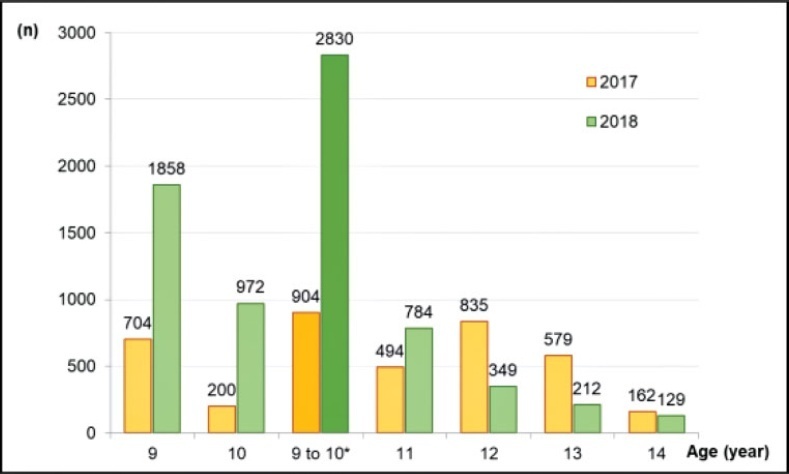
Summary
Revista Brasileira de Ginecologia e Obstetrícia. 2021;43(12):919-925
Endometriosis is a hormone-dependent chronic inflammatory disease with symptoms such as pelvic pain, which affect the physical, emotional, and social health of women in reproductive age. The current overview article aims to explore the effect of complementary medicine on the treatment or in mitigating the risk of endometriosis.
This is an overview article done in Iran. Two separate researchers systematically searched 3 databases (Medline, Scopus, and Cochrane Central Register Trials) until September 2020. The methodological quality of each study was assessed using the assessment of multiple systematic reviews (AMSTAR) tool.
The results of two reviews suggested that physical activity, tobacco smoking, diet, coffee and caffeine intake had no effect on mitigating the risk of endometriosis or improving its treatment, but acupuncture successfully reduced pain and related marker (serum CA-125) levels.
As endometriosis is an annoying disease with many complications and is hard to diagnose and treat, related studies in complementary medicine can help patients with endometriosis. Based on the relevant literature review, among the complementary medicine available for the treatment or to mitigate the risk of endometriosis, only acupuncture seems to alleviate the pain of endometriosis.
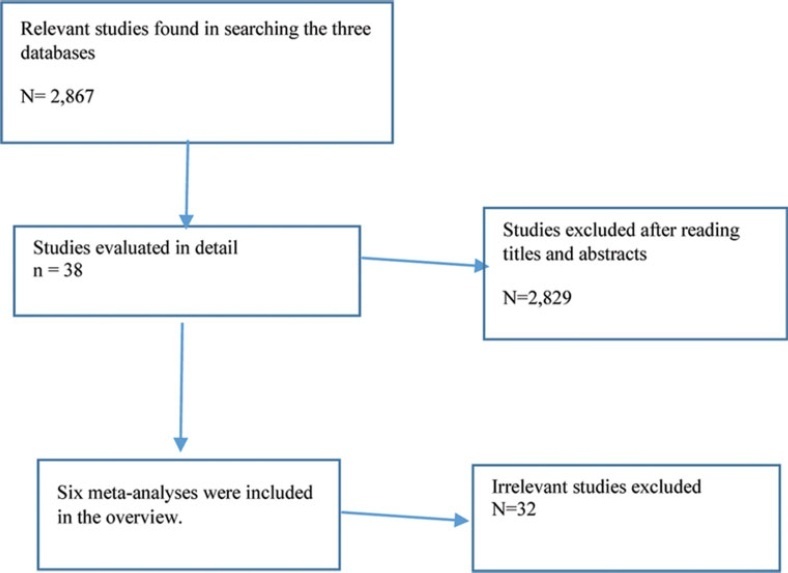
Summary
Revista Brasileira de Ginecologia e Obstetrícia. 2021;43(12):911-918
Currently, there are up to three different classifications for diagnosing septate uterus. The interobserver agreement among them has been poorly assessed.
A total of 50 three-dimensional (3D) volumes of a nonconsecutive series of women with suspected uterine malformation were used. Two nonexpert examiners evaluated a single 3D volume of the uterus of each woman, blinded to each other. The following measurements were performed: indentation depth, indentation angle, uterine fundal wall thickness, external fundal indentation, and indentation-to-wall-thickness (I:WT) ratio. Each observer had to assign a diagnosis in each case, according to the three classification systems (ESHRE/ESGE, ASRM, and CUME). The interobserver agreement regarding the ESHRE/ESGE, ASRM, and CUME classifications was assessed using the Cohen weighted kappa index (k). Agreement regarding the three classifications (ASRM versus ESHRE/ESGE, ASRM versus CUME, ESHRE/ESGE versus CUME) was also assessed.
The interobserver agreement between the 2 nonexpert examiners was good for the ESHRE/ESGE (k = 0.74; 95% confidence interval [CI]: 0.55–0.92) and very good for the ASRM and CUME classification systems (k = 0.95; 95%CI: 0.86–1.00; and k = 0.91; 95%CI: 0.79–1.00, respectively). Agreement between the ESHRE/ESGE and ASRM classifications was moderate for both examiners. Agreement between the ESHRE/ESGE and CUME classifications was moderate for examiner 1 and good for examiner 2. Agreement between the ASRM and CUME classifications was good for both examiners.
The three classifications have good (ESHRE/ESGE) or very good (ASRM and CUME) interobserver agreement. Agreement between the ASRM and CUME classifications was higher than that for the ESHRE/ESGE and ASRM and ESHRE/ESGE and CUME classifications.
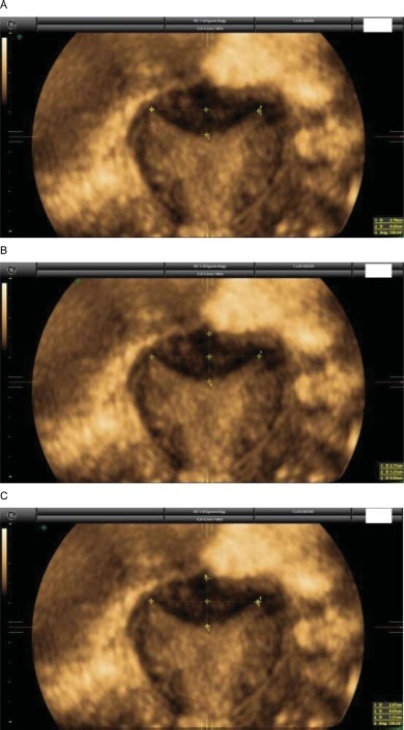
Summary
Revista Brasileira de Ginecologia e Obstetrícia. 2021;43(12):904-910
To evaluate the mean uterine artery pulsatility index (UtAPI) in each trimester of pregnancy as a predictor of early or late pre-eclampsia (PE) in Colombian pregnant women.
The UtAPI was measured in singleton pregnancies in each trimester. Uterine artery pulsatility index as predictor of PE was evaluated by odds ratio (OR), receiver operating characteristic (ROC) curves, and Kaplan-Meier diagram.
Analysis in the 1st and 3rd trimester showed that abnormal UtAPI was associated with early PE (OR: 5.99: 95% confidence interval [CI]: 1.64–21.13; and OR: 10.32; 95%CI: 2.75–42.49, respectively). Sensitivity and specificity were 71.4 and 79.6%, respectively, for developing PE (area under the curve [AUC]: 0.922). The Kaplan-Meier curve showed that a UtAPI of 0.76 (95%CI: 0.58–1.0) in the 1st trimester was associated with early PE, and a UtAPI of 0.73 (95%CI: 0.55–0.97) in the 3rd trimester was associated with late PE.
Uterine arteries proved to be a useful predictor tool in the 1st and 3rd trimesters for early PE and in the 3rd trimester for late PE in a pregnant population with high prevalence of PE.
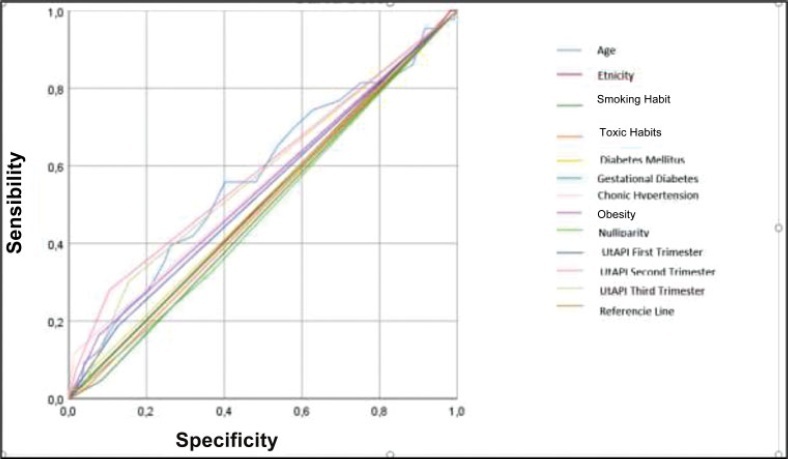
Summary
Revista Brasileira de Ginecologia e Obstetrícia. 2021;43(12):894-903
Gestational hypertension (GH) is characterized by increased blood pressure after the 20th gestational week; the presence of proteinuria and/or signs of end-organ damage indicate preeclampsia (PE). Heme oxygenase-1 (HO-1) is an antioxidant enzyme with an important role in maintaining endothelial function, and induction of HO-1 by certain molecules shows potential in attenuating the condition’s effects over endothelial tissue. HO-1 production can also be stimulated by potassium iodide (KI). Therefore, we evaluated the effects of KI over HO-1 expression in human umbilical vein endothelial cells (HUVECs) incubated with plasma from women diagnosed with GH or PE.
Human umbilical vein endothelial cells were incubated with a pool of plasma of healthy pregnant women (n = 12), pregnant women diagnosed with GH (n = 10) or preeclamptic women (n = 11)with or without the addition of KI for 24 hours to evaluate its effect on this enzyme expression. Analysis of variance was performed followed by Dunnet’s test for multiple comparisons between groups only or between groups with addition of KI (p ≤ 0.05).
KI solution (1,000 µM) reduced HO-1 in the gestational hypertension group (p = 0.0018) and cytotoxicity in the preeclamptic group (p = 0.0143); treatment with KI reduced plasma cytotoxicity but did not affect the preeclamptic group’s HO-1 expression.
Our findings suggest that KI alleviates oxidative stress leading to decreased HO-1 expression; plasma from preeclamptic women did not induce the enzyme’s expression in HUVECs, and we hypothesize that this is possibly due to inhibitory post-transcriptional mechanisms in response to overexpression of this enzyme during early pregnancy.
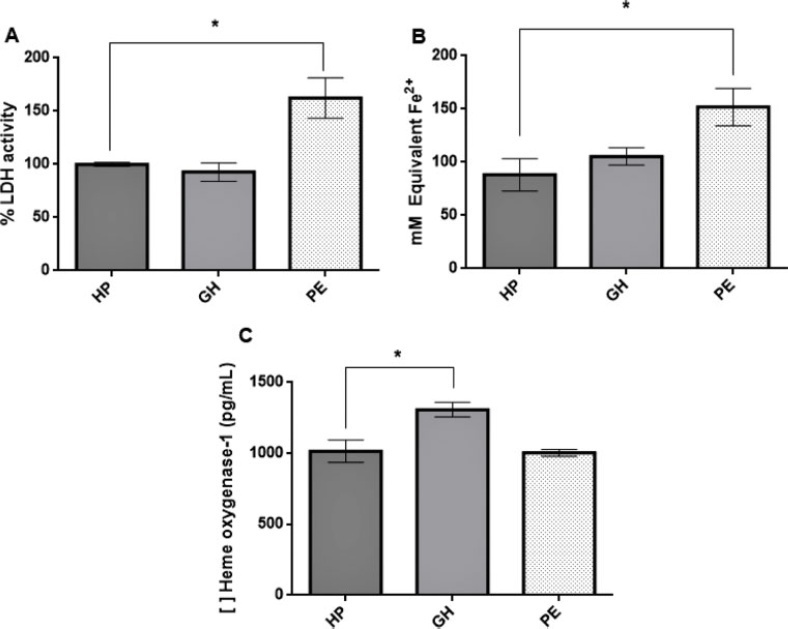
Summary
Revista Brasileira de Ginecologia e Obstetrícia. 2021;43(12):887-893
The purpose of the present study is to standardize and evaluate the use of the immunoglobulin G (IgG) antibody avidity test on blood samples from newborns collected on filter paper to perform the heel test aiming at its implementation in ongoing programs.
Blood samples from newborns were collected on filter paper simultaneously with the heel prick test. All samples were subjected to immunoglobulin M IgM and IgG enzyme-linked immunosorbent assays (ELISA). Peripheral blood was collected again in the traditional way and on filter paper from newborns with high IgG levels (33). Three types of techniques were performed, the standard for measuring IgG in serum, adapted for filter paper and the technique of IgG avidity in serum and on filter paper. The results of the avidity test were classified according to the Rahbari protocol.
Among the 177 samples, 17 were collected in duplicate from the same child, 1 of peripheral blood and 1 on filter paper. In this analysis, 1 (5.88%) of the 17 samples collected in duplicate also exhibited low IgG avidity, suggesting congenital infection. In addition, the results obtained from serum and filter paper were in agreement, that is, 16 (94.12%) samples presented high avidity, with 100% agreement between the results obtained from serum and from filter paper.
The results of the present study indicate that the avidity test may be another valuable method for the diagnosis of congenital toxoplasmosis in newborns.
Summary
Revista Brasileira de Ginecologia e Obstetrícia. 2021;43(11):853-861
To evaluate the knowledge, attitudes, and behaviors regarding complementary and alternative medicine methods of patients who were admitted to gynecology outpatient clinics.
In the present survey, a questionnaire on complementary and alternative medicine practices was applied on 1,000 women (ages between 18 and 83 years old) who were admitted to the gynecology outpatient clinic of a tertiarymaternity hospital. Demographic features and knowledge, attitudes, and behaviors about these methods were inquired in face-to-face interviews.
While 80.7% of the total participants thought that complementary and alternative medicine was beneficial, only 37.5% of them had used these methods previously. The rate of prior knowledge on this subject was of 59.7% and the source of information was physicians for 8.5% of the patients. However, 72.4% of all participants wanted to obtain information on these methods and 93.7% wanted to be informed by physicians. In the decision tree model, having knowledge about complementary and alternative medicine was the most effective factor determining its use (p<0.001). Phytotherapy was found to be the most used method, with 91.4%. The most preferred plant was onion (18.9%), and the most common reasons for herbal use were stress (15.4%) and fatigue (15.2%).
More than one-third of the patients who applied to the gynecology outpatient clinics used one of the complementary and alternativemedicine methods at least once. As gynecologists and obstetricians, we need to be more knowledgeable about these methods to provide correct guidance to our patients for accessing accurate and effective information.
